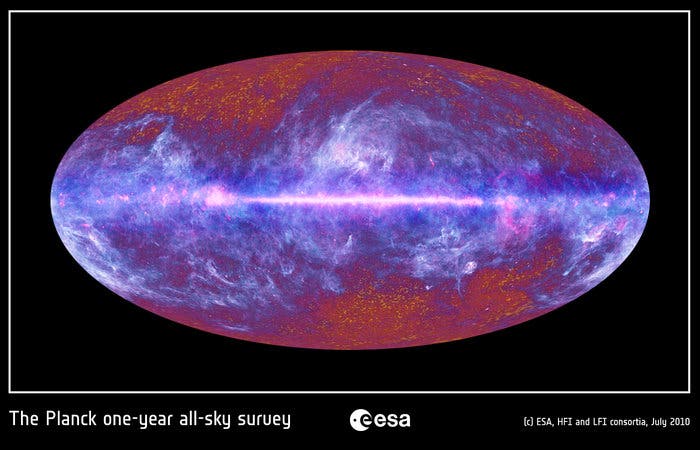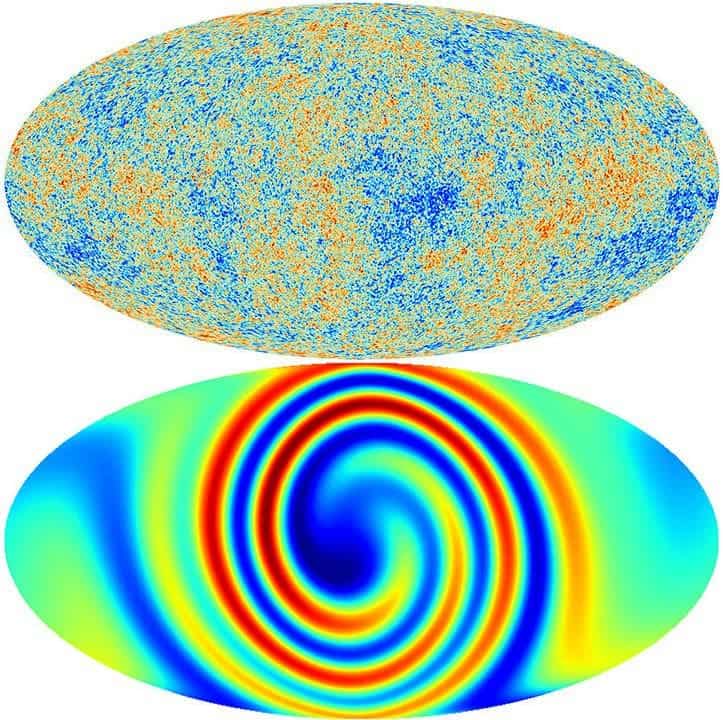Researchers analyzed the background radiation left over from the Big Bang to put an end to a long standing debate: Is our Universe expanding the same in all directions, or does this vary depending on where you look?

Finding out if our Universe is a homogeneous body or not is a really important topic in physics. A lot of really heavy-duty math hinges on us knowing this bit of information — mathematical systems such as Einstein’s field equations (EFE,) a set of 10 equations in his theory of relativity that explain the behavior of gravitation as space-time gets distorted by energy or matter.
A team from the University College London analyzed the cosmic microwave background (CMB,) the left-over radiation from the Big Bang, to find out just that. They found that there isn’t any preferential direction of expansion and the Universe just pushes out evenly all over. This goes along nicely with our current cosmological models — but throws a wrench into the mathematical systems behind EFE.
Homogeneous space
There’s basically two ways our Universe can behave. Either it is homogeneous and isotropic, meaning that its properties are the same no matter which directions you measure them in, or anisotropic, when these properties vary with the direction you measure them in.
Let’s start from a small scale example. On an molecular level, graphite is made up of layers of carbon atoms one on top of the other — kind of like a sandwich. If you apply an electrical current parallel to these layers — along the slices of bread — it’s a really good conductor, because there’s nothing to stop electrons from flowing freely. But if you run the current perpendicular to the layers — through the slices — it’s roughly 20 times more resistant. So its resistivity to electrical current is dependent on which direction you measure it — this is anisotropy.
Certain observations lend weight to the theory that the Universe might be anisotropic — matter, for instance, isn’t evenly distributed throughout it. Star systems, galaxies, and galaxy clusters are clumps of matter seemingly randomly thrown about the Universe, and some researchers have suggested that this caused by some kind of force or directional flow has pushing them into position.
“This, they assume, arises because the Universe was born as a homogeneous soup of subatomic particles in the Big Bang,” explains Adrian Cho for Science magazine. “As the Universe underwent an exponential growth spurt called inflation, tiny quantum fluctuations in that soup expanded to gargantuan sizes, providing density variations that would seed the galaxies.”
Our cosmological models are build from the assumption that these variations only matter on the very small scale (when you’re talking about a whole Universe, “tiny” means clusters of galaxies) but even out as you look at the big picture. But in the early 2000s, NASA’s Wilkinson Microwave Anisotropy Probe (WMAP) mapped ‘bumps’ in the CMB that the homogeneity/isotropy theory couldn’t explain. There’s one region in our Universe so baffling scientists have actually called it the Axis of Evil, which also flies in the face of homogeneity. But an anisotropic Universe could quite comfortably explain both.
Microwaveable answers
To settle the debate once and for all, the University College London team tuned in on the CMB, residual radiation left over from the birth of the Universe. They modeled what an anisotropic Universe would look like, then compared real recordings to their model. As team member Daniela Saadeh told Universe Today:
“We analysed the temperature and polarisation of the cosmic microwave background (CMB), a relic radiation from the Big Bang, using data from the Planck mission. We compared the real CMB against our predictions for what it would look like in an anisotropic universe. After this search, we concluded that there is no evidence for these patterns and that the assumption that the Universe is isotropic on large scales is a good one.”

CMB patterns modeled for an anisotropic Universe — bottom.
They don’t really fit.
Image credits (top) ESA and the Planck Collaboration, (bottom) D. Saadeh et. al.
They calculated that there’s a 1-in-121,000 chance that the Universe has a preferred direction of expansion, which are pretty good odds in favor of the isotropy theory,
“For the first time, we really exclude anisotropy,” Saadeh told Cho at Science. “Before, it was only that it hadn’t been probed.”
So our cosmological models are safe for now. But as Universe Today points out, EFE can only really be solved in an anisotropic Universe. Solutions to these equations were proposed by Italian mathematician Luigi Bianchi in the late 19th century and allow for an anisotropic Universe. However, if that assumption is proved wrong, the solutions are left up in the air.
On the other hand, proving that the Universe is isotropic means we don’t have to re-think everything we know about cosmology, which is pretty convenient.
“In the last 10 years there has been considerable discussion around whether there were signs of large-scale anisotropy lurking in the CMB,” Saadeh said.
“If the Universe were anisotropic, we would need to revise many of our calculations about its history and content. Planck high-quality data came with a golden opportunity to perform this health check on the standard model of cosmology and the good news is that it is safe.”
The results have been accepted for publication in an upcoming edition of Physical Review Letters under the title “How isotropic is the Universe?”. Until then, you can access the pre-print version at arXiv.org.:


